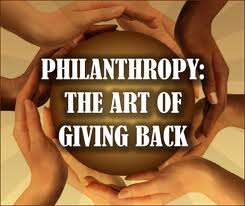 Have you ever intended to do something, but “life happened” and you dropped the ball? Well, this is what happened to me last week when I intended to write a post for the March Nonprofit Blog Carnival weaving together social media, fundraising and a multi-channel approach. While I missed the submission deadline, I’m pressing forward with the post because I think we can all learn something from the Community Crisis Center and their 2009 “Crisis Overnight” campaign.
Have you ever intended to do something, but “life happened” and you dropped the ball? Well, this is what happened to me last week when I intended to write a post for the March Nonprofit Blog Carnival weaving together social media, fundraising and a multi-channel approach. While I missed the submission deadline, I’m pressing forward with the post because I think we can all learn something from the Community Crisis Center and their 2009 “Crisis Overnight” campaign.
In my hometown of Elgin, Illinois, our domestic violence shelter was experiencing a crisis of its own in 2009 because the nearly bankrupt State of Illinois kept falling behind on its accounts payable to non-profit organizations that it had contracted with to provide services (e.g. running a domestic violence program). In 2009, it was so bad that Community Crisis Center was owed $400,000 and cash flow management was becoming a challenge.
Years earlier, a staff person had written an article for The Courier-News newspaper focused on providing readers with a 24 hour look at what happens at Community Crisis Center. Looking a mountain of red ink, the executive director, Gretchen Vapnar, decided that a similar approach was warranted in order to generate public awareness about the center’s situation.
 The only difference this time around was that it was a different world. Newspaper readership was down. Internet usage was exploding. It was a brave new world, and social media experts like Ruth Munson and Sarah Evans advised the center to take their concept online. Here is what this campaign end up looking like:
The only difference this time around was that it was a different world. Newspaper readership was down. Internet usage was exploding. It was a brave new world, and social media experts like Ruth Munson and Sarah Evans advised the center to take their concept online. Here is what this campaign end up looking like:
- Sarah Evans spent an evening at the center. She witnessed the impact that the center makes in the lives of everyday people, and she blogged and tweeted about her experience. (e.g. #crisisovernight)
- In addition to bearing witness, she communicated a powerful case for support using a number of different online and social media platforms (e.g. Twitter, blog, Facebook, and YouTube).
- Other non-tech channels were used by the center. For example, volunteers set-up camp outside the center and donors were invited to “drive by” and drop off donations. Staff also attempted to integrate a pre-existing direct mail campaign into the “crisis overnight” campaign.
- The initial goal was to raise $150,000 in three weeks. Unfortunately, they didn’t achieve this goal, but they kept plugging away to get the campaign to go viral.
- While they didn’t achieve their original goal, they did raise $161,000 in six weeks.
- In the end, there were 756 online donors and the average size gift was less than $100/donor. There also was one sizable $40,000 gift from a local foundation.
If you want to learn more about this campaign, you can do a Google search on “crisis overnight.” You can also click here to view a SlideShare presentation by Sarah Evans.
The most interesting thing to me about this entire campaign was what the executive director had to say more than three years later when looking back on the entire experience.
First, Gretchen marveled at how “everything always comes down to the same things.” What she is referring to is how the keys to success for this online campaign are many of the same best practices that work for traditional fundraising activities. She gave the following three examples to illustrate her point:
- Donors need to connected. (e.g. your agency needs to be visible to the donor or your mission needs to touch/connect with them).
- The “who” is still key. The person asking for the donation correlates greatly to your campaign’s success.
- There is a “trust factor.” Donors need to trust the organization will follow through and do what they said they’d do with the donor’s investment. If they don’t know the agency well, then the volunteer solicitor is leveraging their relationship with the donor to create that level of trust.
Old fashion fundraising strategies and best practices

Online tactics (e.g. website, email, social media, etc)
Success
There was also one other interesting lesson that Gretchen shared with me. She said that sustained success requires that non-profit organizations put someone in charge of their ePhilanthropy strategy (e.g. hire an online community manager).
Has your agency tied to undertake similar online fundraising campaigns? If so, what were the results? What did you learn? Please share your experiences in the comment box below because we can all learn from each other.
Here’s to your health!
Erik Anderson
Founder & President, The Healthy Non-Profit LLC
www.thehealthynonprofit.com
erik@thehealthynonprofit.com
http://twitter.com/#!/eanderson847
http://www.facebook.com/eanderson847
http://www.linkedin.com/in/erikanderson847






















